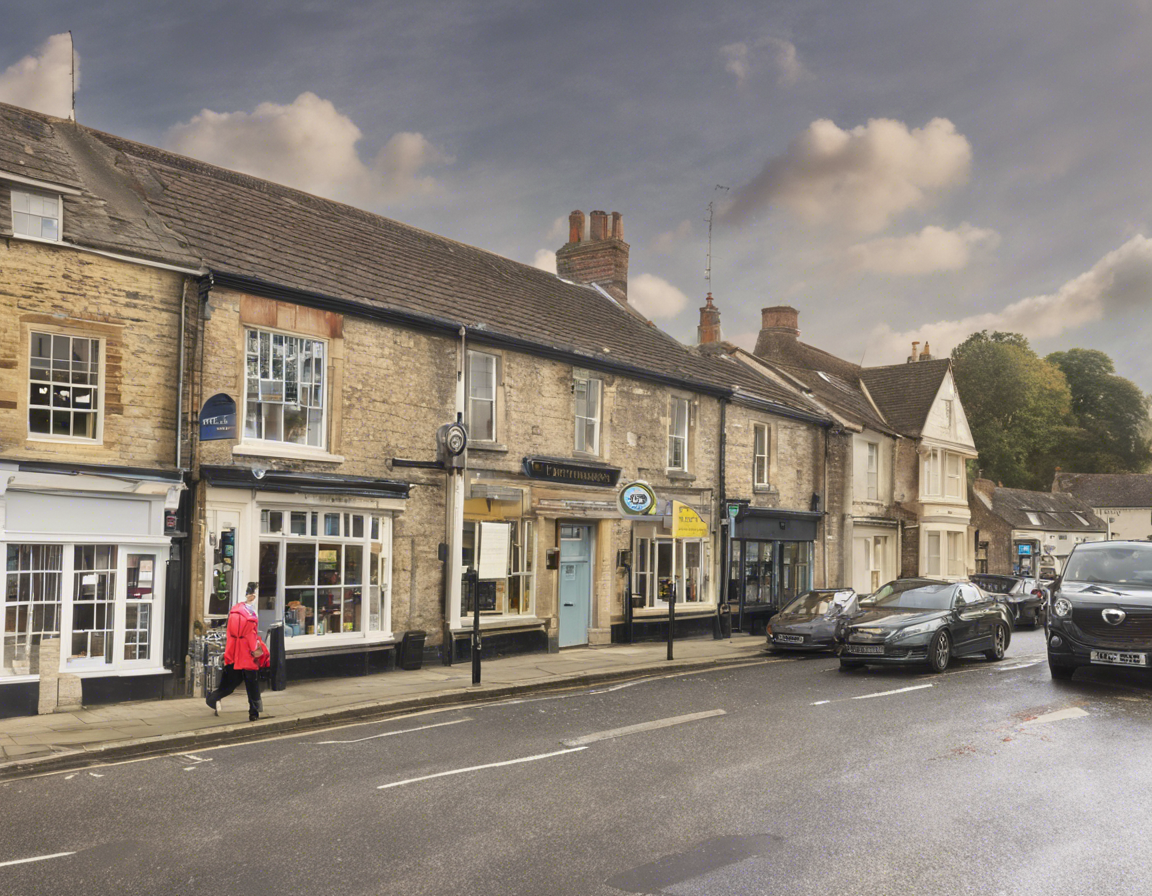Introduction
Warminster is a charming historic town located in Wiltshire, England. With a rich history dating back to the Saxon era, Warminster has evolved over the centuries into a vibrant community that seamlessly blends tradition with modernity. This article delves into the rise of Warminster, exploring its key historical milestones, cultural attractions, and the reasons why it continues to captivate visitors and residents alike.
The Early History of Warminster
Warminster’s history can be traced back to the Saxon era when it was known as ‘Gwarminaford,’ meaning ‘the fortress by the weir.’ The town grew around a defensive settlement and a ford over the River Were, which provided a strategic advantage for trade and defense. By the time of the Norman Conquest in 1066, Warminster had become a thriving market town, serving as a hub for agricultural commerce in the region.
The Medieval Period and Warminster Abbey
One of the most significant landmarks in Warminster’s history is Warminster Abbey, founded in the 8th century. The Abbey played a crucial role in shaping the town’s spiritual and cultural identity, attracting pilgrims and scholars from far and wide. Although the original Abbey was dissolved during the Reformation, its remnants still stand as a testament to Warminster’s medieval past.
The Georgian Era and Warminster’s Transformation
The Georgian era brought prosperity and growth to Warminster, thanks to its thriving wool trade and strategic location on the road between London and the West Country. The town’s elegant Georgian architecture, characterized by sash windows and Bath stone facades, is a lasting legacy of this period. Prominent Georgian landmarks in Warminster include the Athenaeum and the Market House, which continue to be cherished by residents and visitors.
Warminster in the Modern Era
In the 20th century, Warminster underwent further transformations, becoming a diverse and dynamic community with a strong sense of identity. The town’s proximity to Salisbury Plain has played a significant role in its modern history, as it became a garrison town for the British Army during World War I and World War II. Today, Warminster is known for its military heritage and its close-knit community spirit.
Cultural Attractions and Events in Warminster
Warminster offers a wealth of cultural attractions and events that showcase its vibrant heritage and creative talent. The Shearwater Lake is a popular destination for outdoor enthusiasts, offering scenic walking trails and water activities. The annual Warminster Carnival brings the community together in a colorful celebration of music, dance, and entertainment. Additionally, the Warminster Maltings is a historic brewery that continues to produce fine ales using traditional methods.
The Future of Warminster: Preserving the Past, Embracing the Future
As Warminster continues to evolve and grow, preserving its historic character and cultural heritage remains a top priority for residents and local authorities. Initiatives such as the Warminster Civic Trust work tirelessly to conserve the town’s architectural gems and promote sustainable development. By embracing innovation and community engagement, Warminster is poised to thrive in the 21st century while honoring its storied past.
FAQs about Warminster:
Q: What is the best time to visit Warminster?
A: Warminster is charming year-round, but the summer months from June to August offer pleasant weather for exploring the town and its outdoor attractions.
Q: Is Warminster easily accessible by public transport?
A: Yes, Warminster is well-connected by train and bus services, making it easily accessible from major cities like London and Bristol.
Q: Are there guided tours available in Warminster?
A: Yes, visitors can enjoy guided tours of Warminster Abbey, the Athenaeum, and other historic sites to learn more about the town’s fascinating history.
Q: What are some recommended dining options in Warminster?
A: Warminster boasts a variety of cafes, restaurants, and traditional pubs serving delicious local fare, including the renowned Wiltshire cider and cheese.
Q: Are there accommodations available in Warminster for overnight stays?
A: Yes, Warminster offers a range of accommodation options, from charming bed and breakfasts to luxury hotels, ensuring a comfortable stay for visitors.
Q: Can visitors explore the surrounding countryside and attractions near Warminster?
A: Absolutely, Warminster serves as a gateway to the stunning Wiltshire countryside, with attractions like Longleat Safari Park and Stonehenge just a short drive away.
Q: What unique shopping experiences can visitors enjoy in Warminster?
A: Visitors can explore a mix of independent shops, artisan markets, and antique stores in Warminster, offering a treasure trove of unique finds and gifts.
Q: How can visitors immerse themselves in Warminster’s cultural scene?
A: By attending local events, art exhibitions, and music festivals, visitors can immerse themselves in Warminster’s vibrant cultural scene and connect with the community.
Q: Are there opportunities for outdoor activities and nature walks in Warminster?
A: Yes, Warminster is surrounded by picturesque countryside, offering ample opportunities for hiking, birdwatching, and exploring nature reserves like Copheap Meadow.
Q: What makes Warminster a unique destination for history enthusiasts?
A: Warminster’s diverse history, from its Saxon roots to its military heritage, makes it a compelling destination for history enthusiasts keen on exploring the town’s past through its landmarks and museums.
